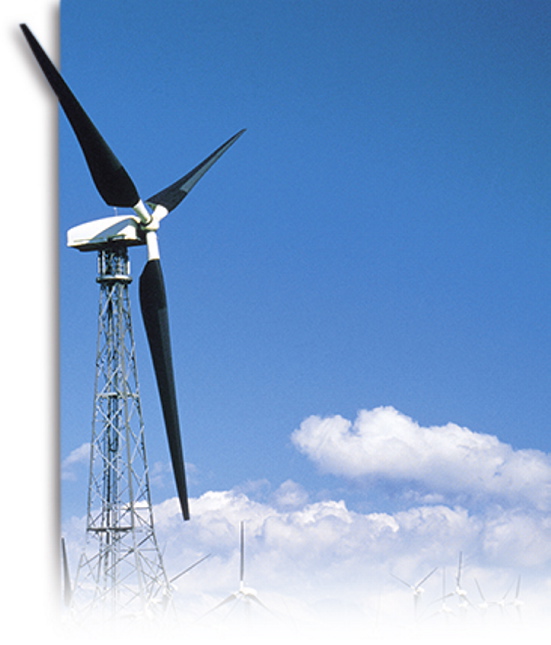SKOWHEGAN — The Skowhegan State Fair, which wraps up its 196th year Saturday with truck pulls and a country rock performance by the band Bad Penny, is being powered solely on wind energy this year after a donation by two wind advocacy groups.
The advocates say the fair in Somerset County, which attracts about 60,000 people during its 10-day run, is the perfect place to spread the word about wind as renewable energy.
“The Skowhegan State Fair is a historic icon,” said Paul Williamson, director and industry coordinator at the Maine Ocean & Wind Energy Initiative. “It represents Maine’s rural economy, which is something that wind energy has become a part of, and so we wanted to make sure wind was represented at the fair.”
Wind also had a visible presence at the fair this year: large posters advertising wind energy, a create your own wind blade contest on Friday, and the use of wind energy itself.
The Portland-based initiative, along with Wind for Maine, another group advocating for the use of wind energy, collectively purchased enough electricity from renewable energy generators to power the fair, which typically requires around 89,000 kilowatt-hours of electricity.
The cost of the power is expected to be between $6,000 and $7,000 when the electric bill arrives, according to Thomas Dillon, president of the Skowhegan State Fair. Dillon said he was approached a few months ago by the two groups about using wind power at the fair, at no cost to the fair organization.
Dillon said he wasn’t sure whether the fair would use wind power again, but that so far there have been no glitches.
“I have had a lot of questions about it,” he said. “People keep asking me where the windmill is, but there isn’t one.”
The wind power is generated at various wind farms around the state, and the current produced is fed into the existing electrical power grid. As they generate energy, renewable energy facilities such as wind farms generate credits that can be purchased as a way of guaranteeing that the energy you are paying for comes from that facility.
Electricity for the midway, the lights, communication services and other uses is still drawn from the electrical distribution system the same way as power generated by coal, oil, gas or nuclear power. But the renewable energy credit mechanism allows a user to designate its power supply as representing energy produced by wind farms, according to Williamson. In effect, it means the price of electricity goes back to the wind farm as payment for the power produced.
“The electricity they are paying for is supported by renewable energy,” he said. “There’s no guarantee of where it came from, but by using the credits mechanism we ensure that the entire value of the energy used by the fair goes to wind.”
In Maine, wind energy has been met with mixed reviews – by advocates who say it will bring jobs and a source of renewable energy to the state, and by opponents, including concerned environmentalists and those opposed to disrupting rural character with the construction of large, potentially noisy wind farms. There are more than a dozen proposals for wind farms around the state that are being considered or have recently been decided by the Maine Department of Environmental Protection.
“I think it’s good and bad,” said Wayne Mayo of New Sharon, who was at the fair with his wife and two grandchildren Friday. “The amount of wind energy you get out of farms is not enough compared to what goes into the construction.”
Tanner Mayo and Jocelyn Tyler, Wayne Mayo’s grandchildren, were participating in an educational and fun build-your-own-wind-blade challenge, which required participants to build their own windmill using paper cups and construction paper for blades.
Once a windmill was constructed, it was attached to a toy car and tested using a fan to see if the wind power could be used to pull the car.
Rachel Ohm can be contacted at 612-2368 or at:
rohm@centralmaine.com
Send questions/comments to the editors.






Success. Please wait for the page to reload. If the page does not reload within 5 seconds, please refresh the page.
Enter your email and password to access comments.
Hi, to comment on stories you must . This profile is in addition to your subscription and website login.
Already have a commenting profile? .
Invalid username/password.
Please check your email to confirm and complete your registration.
Only subscribers are eligible to post comments. Please subscribe or login first for digital access. Here’s why.
Use the form below to reset your password. When you've submitted your account email, we will send an email with a reset code.